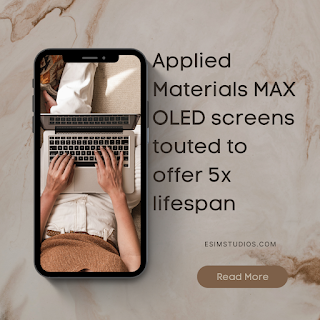Applied Materials has announced a transformative development in OLED display technology with its new MAX OLED platform. This innovation is said to redefine the scalability and efficiency of OLED manufacturing, enabling high-quality displays across a broader range of devices, including PCs, and TVs.
The core advancement is said to lie in transitioning OLED production from Gen 6 to Gen 8 glass substrates. This shift allows manufacturers to produce larger and more cost-effective OLED panels as Gen 8 substrates provide higher yield efficiency, reducing costs by optimizing the number of displays produced per sheet of glass. This scalability directly addresses the growing demand for larger and more versatile screens, especially in consumer electronics like tablets and laptops.
MAX OLED technology also promises significant improvements in display performance. Panels produced using this system are said to achieve up to 3x brighter screens, offer 2.5x higher resolution, and enj oy a 5x longer lifespan compared to traditional OLED displays. Additionally, these advancements are achieved with 30% lower power consumption, making the technology more energy-efficient and environmentally friendly.
The platform integrates new materials and precision engineering processes to overcome historical challenges in OLED manufacturing, such as uniformity and material waste. Its unique co-evaporation process enhances material deposition accuracy, while proprietary tools streamline production workflows. By improving material utilization, MAX OLED not only reduces costs but also minimizes environmental impact.
Leading display manufacturers, including Samsung Display, Visionox, and Japan Display, are adopting this new system, signaling a shift in the display industry. The ability to produce cost-effective, high-quality OLED displays at scale opens opportunities for expanding OLED adoption beyond premium smartphones and TVs. As a result, consumers can expect more af fordable OLED technology across a wider array of devices.
Recently we saw TCL announcing its commitment to inkjet-printed OLED display technology. Similar to MAX OLED, the company emphasized the cost-effectiveness and scalability of this manufacturing process, which could potentially lead to larger, more affordable OLED screens. TCL says that its new inkjet-printed OLED offers high contrast, better brightness control, and reduced production waste compared to traditional methods, making them suitable for both consumer electronics and professional use. These developments are part of TCL's broader efforts to enhance OLED and Mini LED technologies to stay competitive in the high-performance display market.


0 Comments
Post a Comment